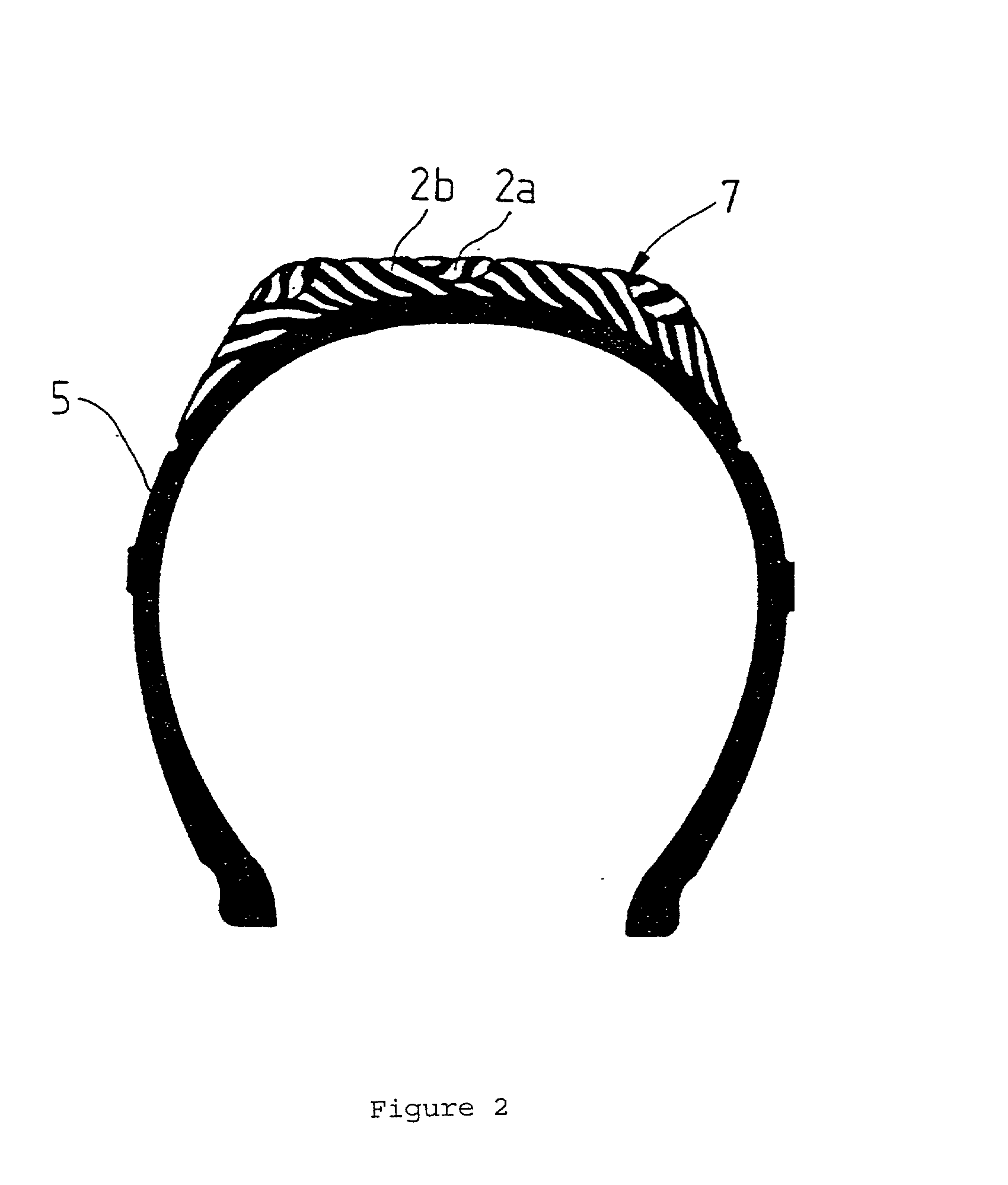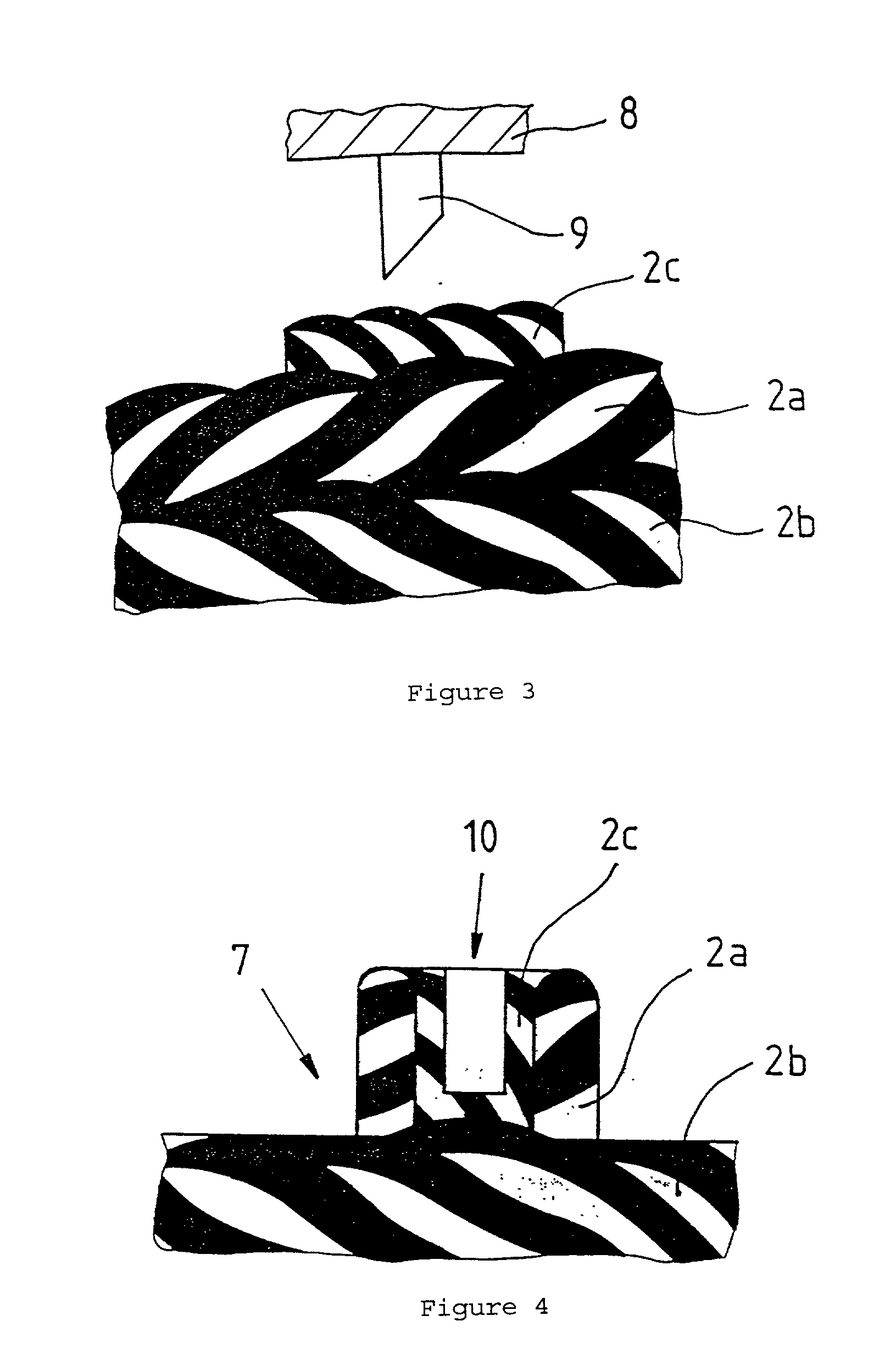Process for producing a vehicular pneumatic tire
a technology of pneumatic tires and production processes, applied in the direction of non-skid devices, transportation and packaging, other domestic articles, etc., can solve the problems of slugs at the end of the tread strip, and is not easily and uncomplicated to achiev
- Summary
- Abstract
- Description
- Claims
- Application Information
AI Technical Summary
Benefits of technology
Problems solved by technology
Method used
Image
Examples
Embodiment Construction
[0028] Illustrated in FIG. 1 is an extruder (1), from which a strip of material (2) is extruded, which, due to the configuration of the nozzle of the extruder, has a round cross section. This round rope-like strip of material (2) consists of a rubber mixture. Any suitable rubber formulation used in the tire industry can be utilized for purposes of this invention. Via diversion rollers (3) and a not further illustrated roller mechanism, the extruded round ropelike strip of material (diameter for example approximately 1 cm) is converted into a flat rectangular crosssectional form (approximately 16.times.2 mm).
[0029] The partial tire (5), which is mounted so as to be freely rotatable, is driven by a support head (4). By means of a computer control (6), beginning with the extrusion of the strip of material (2) and over the movable support head (4), the now flattened strip of material is wound with its broad side onto the partial tire (5). The winding on of the strip of material is accom...
PUM
| Property | Measurement | Unit |
|---|---|---|
| thickness | aaaaa | aaaaa |
| diameter | aaaaa | aaaaa |
| area | aaaaa | aaaaa |
Abstract
Description
Claims
Application Information
 Login to View More
Login to View More - R&D Engineer
- R&D Manager
- IP Professional
- Industry Leading Data Capabilities
- Powerful AI technology
- Patent DNA Extraction
Browse by: Latest US Patents, China's latest patents, Technical Efficacy Thesaurus, Application Domain, Technology Topic, Popular Technical Reports.
© 2024 PatSnap. All rights reserved.Legal|Privacy policy|Modern Slavery Act Transparency Statement|Sitemap|About US| Contact US: help@patsnap.com










